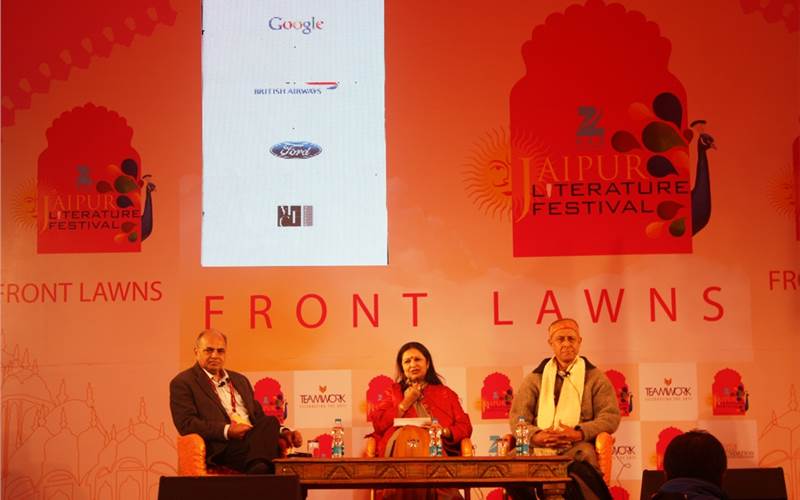Jaipur Literature Festival 2014: a pilgrimage for literature lovers
Biggest line of authors, an avalanche of content, engaging discussions and a tint of controversy made the latest edition of the fair exciting, reports Supreeth Sudhakaran.
23 Jan 2014 | By Supreeth Sudhakaran
The Jaipur Literature Festival hosted around 2.2 lakhs of literature lovers over its five days despite rain trying to play a spoilsport on the last two days of the festival. Rains failed to arrest the flow of visitors, and as a result, JLF saw the highest number of unique visitors on Sunday, with a footfall of 75,210. Overall, footfall at the Festival increased 25%, chiefly due to increased capacity and better traffic flow around the Festival site. In the words of festival director and renowned author, William Dalrymple, “A testament that books still matter.”
Over 240 speakers attended the annual event, including the two Nobel laureates, Amartya Sen and Harold Varmus; representing over 14 Indian languages. In fact, a session was dedicated to discuss endangered languages of India.
 Concurrently to the Festival, a B2B conference BookMark was initiated for publishers to deliberate and discuss issues and trends.
Concurrently to the Festival, a B2B conference BookMark was initiated for publishers to deliberate and discuss issues and trends.
The three-day conference (from 18 to 20 January 2014) saw a mix of participants from independent publishing houses, authors, journalists and few representatives of the ‘giant’ publishing houses—an epithet that stuck to multinational publishing houses during the conference.
Alexandra Pringle, group editor-in-chief, Bloomsbury started the discussions of the first day by stating, “One of the hardest things in the world is making book publishing profitable.”
Arun Maheshwari, managing director of Vani Prakashan, one of the oldest Hindi publishing houses noted, “India is a nation of over 24 recognised languages, large demographic variation, and huge number of publishers compete in this market. Yet, we haven’t made our mark even with our national language, that is, Hindi; despite over 50cr citizens speak the language. 65% of our population consists of youth (under the age of 30). The potential for growth is huge yet remains highly untapped.”
The three days culminated with publishers aggressively debating over issues such as changing content consumption habits, evolution of self-publishing, piracy, DRM issues, and threats and opportunities in times of consolidation and mergers. Publishers also discussed how ‘curated’ or traditional publishing model have been disrupted with challenges of distribution. John Makinson, chairman, Penguin Random House encapsulated the whole discussion in a single statement: The changing dynamics of trade have forced publishing houses to move from display to discovery model of distribution.














 See All
See All